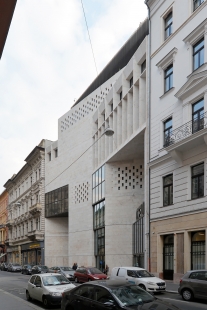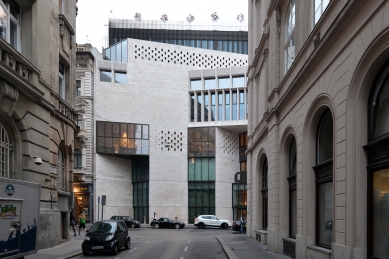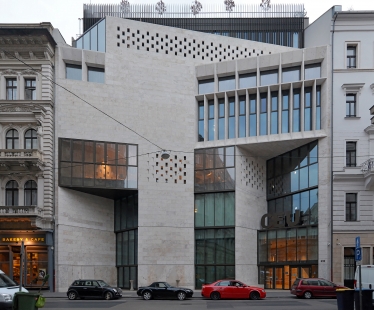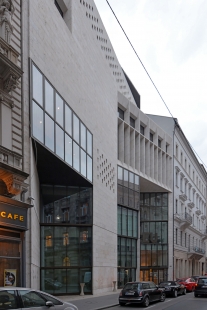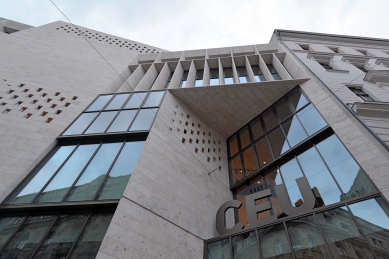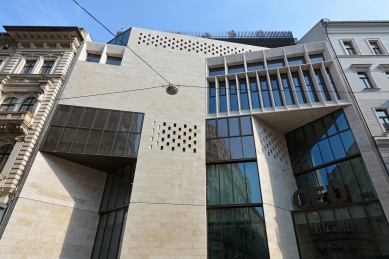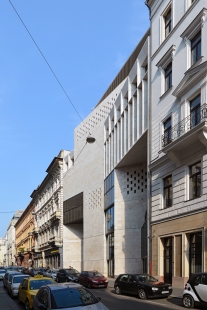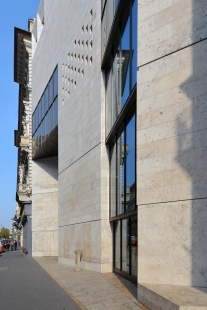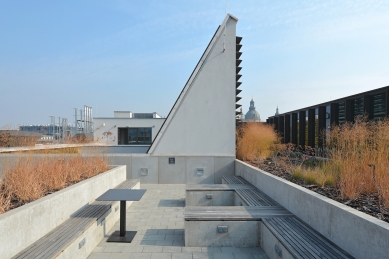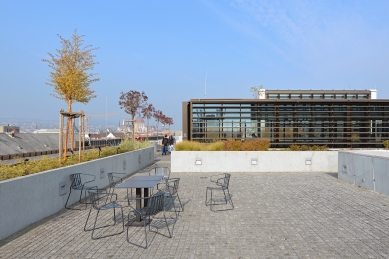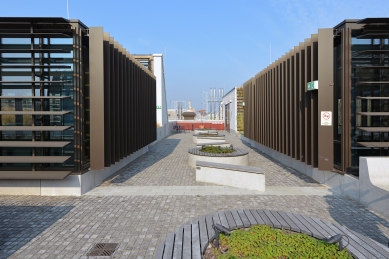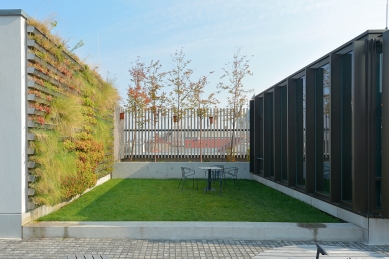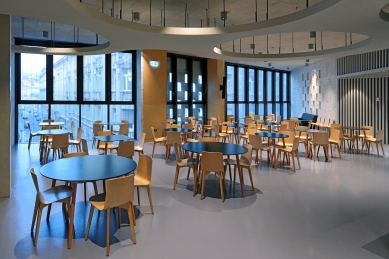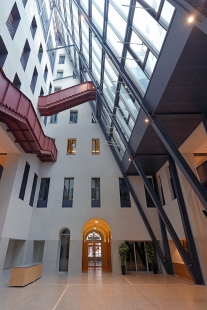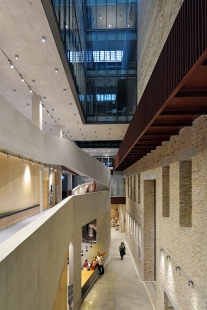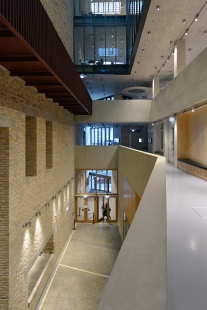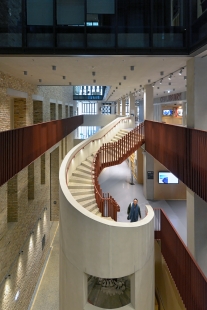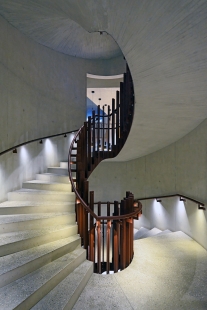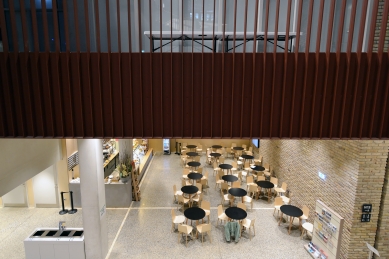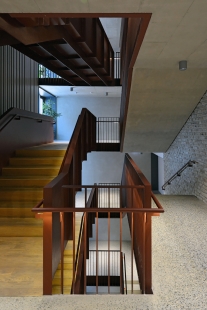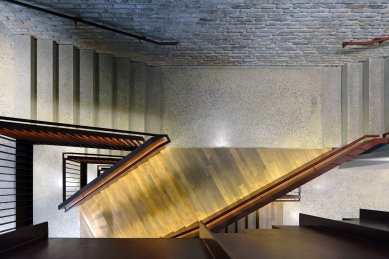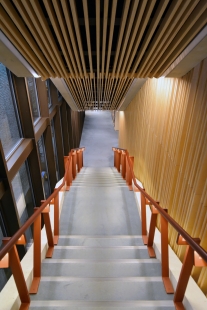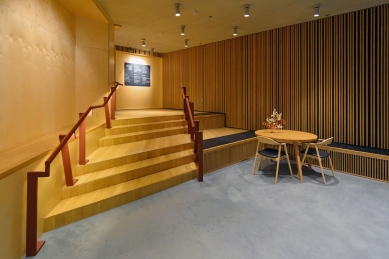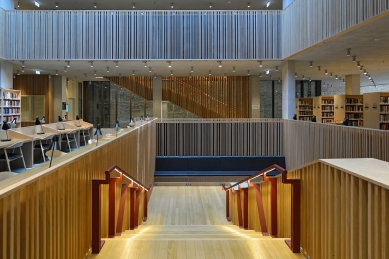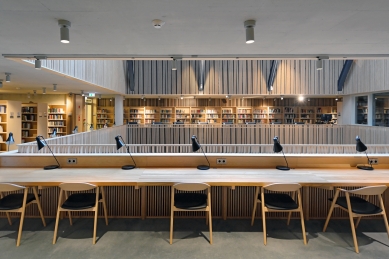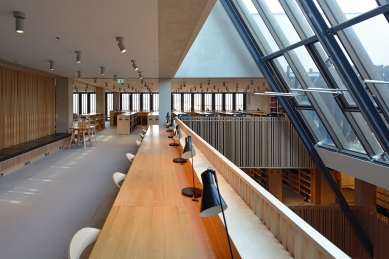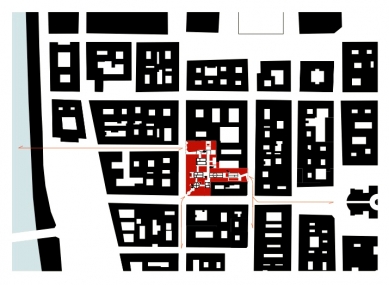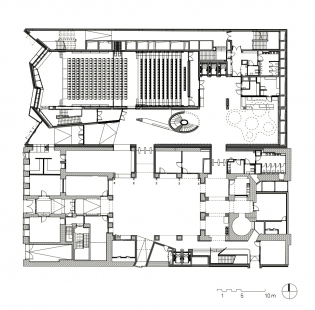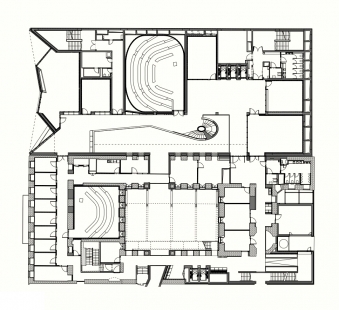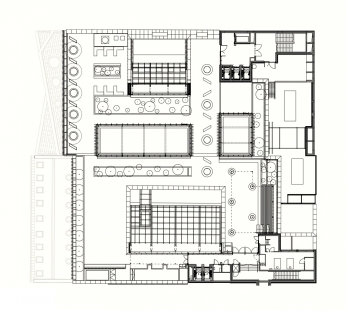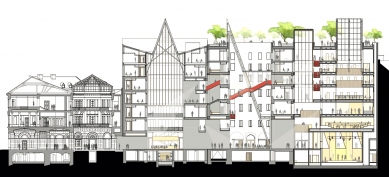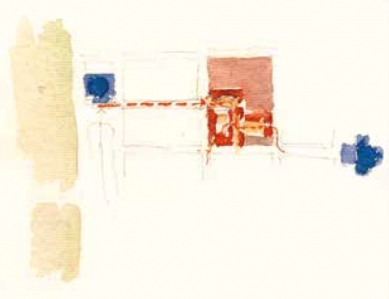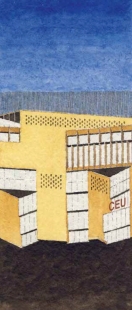
Central European University
Közép-európai Egyetem

This is the first phase of a campus masterplan for the Central European University. The project changes the relationship of the university to the city. Phase 1 provides a public face for the university, a new entrance on axis with the Danube, auditorium, classrooms and learning café for citizens and students. The campus becomes integrated with the urban realm.
Our brief was to design a new 35,000sqm Campus on a World Heritage site in central Budapest, incorporating all university departments and facilities. The scheme involves the radical transformation of five adjoining, previously disconnected, historic buildings and the construction of two new buildings.
The existing CEU campus consisted of adjoining buildings, each with their own entrance and minimal interconnectivity between them. We identified opportunities to intervene in this downtown urban block, to make what was a disconnected and disparate set of buildings into an open campus. We employed a process of selective subtraction and addition to transform the campus into a metaphorical crossroads. By a carefully considered “surgical” strategy we linked existing and new facilities through a legible sequence of connected courtyards. The functional layout provides easy communication between interrelated adjacencies, clusters connected by social spaces, encouraging interaction and collaboration between academic departments.
We proposed a phased strategy, making connections between existing courtyards, demolishing inefficient buildings and designing new buildings around a series of courts. Courtyards are roofed over to provide a tempered environment from the climatic extremes in winter and summer. The courtyards are the campus, providing circulation system and social space. Openings are cut through to provide visual connections. Flying staircases interconnect department offices to teaching spaces.
The new building on Nador Utca forms the main entrance to the University. It houses the library and learning commons over a multi-purpose auditorium and conference facilities. The adjoining building is radically refurbished to provide a covered courtyard for public events, with a business school and teaching spaces at upper levels. A roof garden straddles both buildings to provide views over the city skyline.
The palette of materials has been selected for their endurance and natural material qualities that give character to the overall appearance. Stone, timber, concrete and steel form the fabric of the internal public spaces, with bespoke furniture used throughout the building. The new facades are constructed with local limestone, designed to emphasise the geometric quality of the building and continuing the tradition of solidity and permanence of the Budapest stone architecture.
Landscaped Roof Gardens (intensively planted) play an important role in reducing heat gain in the buildings and enhance the environmental sustainability of the project. Landscaped gardens are included on the roofs of new and existing buildings. These form an accessible roofscape; a ‘hanging gardens of Budapest’. The roof gardens help to filter the air and shade the glass in summer as well as providing an important amenity space in this dense downtown site. The well-tempered environment of the covered courtyards, combined with a practical approach to natural ventilation, ensure a low-carbon economical strategy for long-term energy conservation.
Our brief was to design a new 35,000sqm Campus on a World Heritage site in central Budapest, incorporating all university departments and facilities. The scheme involves the radical transformation of five adjoining, previously disconnected, historic buildings and the construction of two new buildings.
The existing CEU campus consisted of adjoining buildings, each with their own entrance and minimal interconnectivity between them. We identified opportunities to intervene in this downtown urban block, to make what was a disconnected and disparate set of buildings into an open campus. We employed a process of selective subtraction and addition to transform the campus into a metaphorical crossroads. By a carefully considered “surgical” strategy we linked existing and new facilities through a legible sequence of connected courtyards. The functional layout provides easy communication between interrelated adjacencies, clusters connected by social spaces, encouraging interaction and collaboration between academic departments.
We proposed a phased strategy, making connections between existing courtyards, demolishing inefficient buildings and designing new buildings around a series of courts. Courtyards are roofed over to provide a tempered environment from the climatic extremes in winter and summer. The courtyards are the campus, providing circulation system and social space. Openings are cut through to provide visual connections. Flying staircases interconnect department offices to teaching spaces.
The new building on Nador Utca forms the main entrance to the University. It houses the library and learning commons over a multi-purpose auditorium and conference facilities. The adjoining building is radically refurbished to provide a covered courtyard for public events, with a business school and teaching spaces at upper levels. A roof garden straddles both buildings to provide views over the city skyline.
The palette of materials has been selected for their endurance and natural material qualities that give character to the overall appearance. Stone, timber, concrete and steel form the fabric of the internal public spaces, with bespoke furniture used throughout the building. The new facades are constructed with local limestone, designed to emphasise the geometric quality of the building and continuing the tradition of solidity and permanence of the Budapest stone architecture.
Landscaped Roof Gardens (intensively planted) play an important role in reducing heat gain in the buildings and enhance the environmental sustainability of the project. Landscaped gardens are included on the roofs of new and existing buildings. These form an accessible roofscape; a ‘hanging gardens of Budapest’. The roof gardens help to filter the air and shade the glass in summer as well as providing an important amenity space in this dense downtown site. The well-tempered environment of the covered courtyards, combined with a practical approach to natural ventilation, ensure a low-carbon economical strategy for long-term energy conservation.
O'Donnell & Tuomey Architects
5 comments
add comment
Subject
Author
Date
...Škoda, škoda,...
šakal
15.01.19 08:55
...Ztráta
16.01.19 10:12
...
Daniel
16.01.19 11:46
Opravdu
16.01.19 02:08
Re: Opravdu
16.01.19 07:20
show all comments


